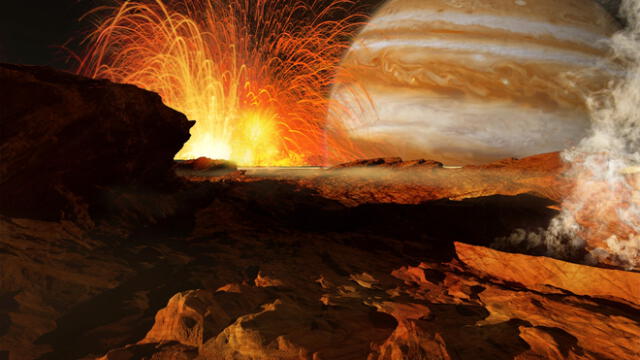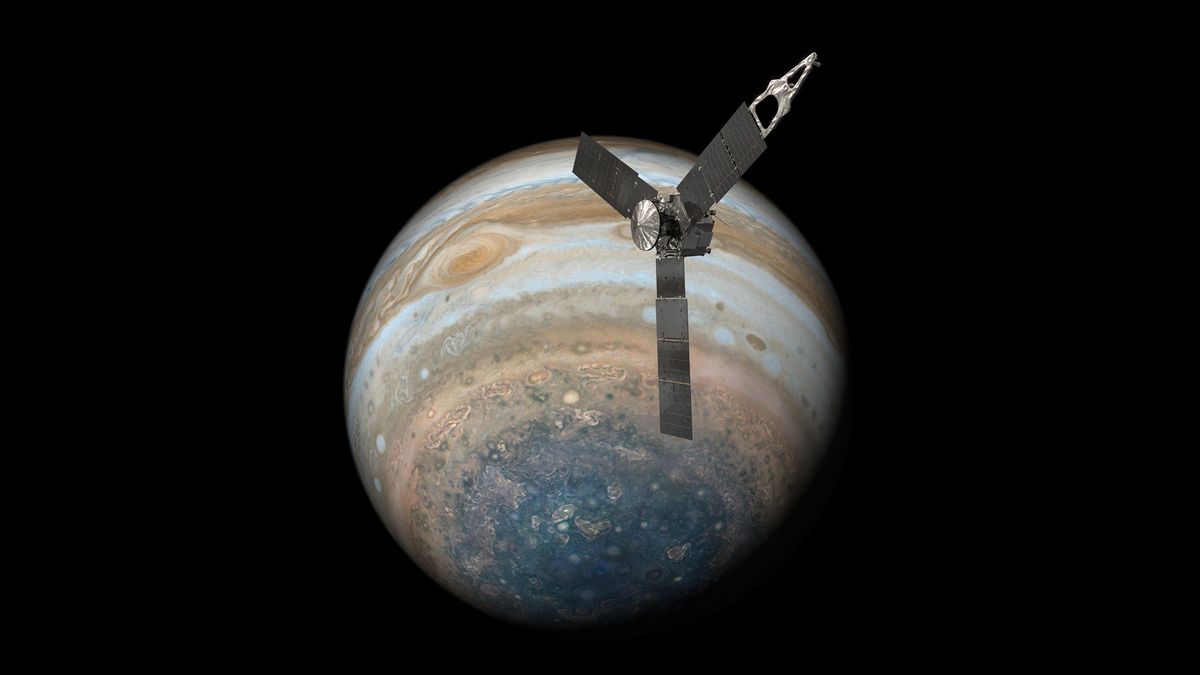NASA detected a lava-filled world: Jupiter’s moon Io and its Intense volcanic activity
Io, one of Jupiter's moons, is known for its intense geological activity, with more than 400 active volcanoes, making it the most volcanically active body in the solar system.

Recently, Io set a unique record: a massive eruption detected by NASA's Juno spacecraft, the most powerful ever observed on this moon. This volcanic eruption occurred in a newly discovered location on Io, covering an area similar to that of the Spanish region of Andalusia. The energy released was six times greater than that generated by all the power plants on Earth combined.

Juno's spacecraft in action. Photo: Space.com.
How did NASA detect the eruption?
The discovery of this eruption was made possible by data collected by the Juno spacecraft during its flybys in December 2023 and February 2024, when it came within about 1,500 kilometers of Io’s surface. However, the phenomenon was identified on December 27, 2024, when the spacecraft was 74,400 kilometers from the moon, focusing on its southern hemisphere with the JIRAM infrared instrument.
Scott Bolton, head of the Juno mission, commented on the eruption: "While each flyby has provided us with surprising data, this latest one left us speechless. We are witnessing the most intense volcanic event ever recorded in the volcanic world of our solar system."
Close flybys
Designed to capture infrared light (which is invisible to the human eye) emerging from deep inside Jupiter, the JIRAM instrument probes the gas giant’s weather layer, peering 50 to 70 kilometers (30 to 45 miles) below its cloud tops. However, since NASA extended Juno’s mission, the team has also used the instrument to study the moons Io, Europa, Ganymede, and Callisto.
During its extended mission, Juno’s trajectory passes by Io every other orbit, flying over the same part of the moon each time. Previously, the spacecraft made close flybys of Io in December 2023 and February 2024, getting within about 1,500 kilometers (930 miles) of its surface. The latest flyby took place on December 27, 2024, bringing the spacecraft within about 74,400 kilometers (46,200 miles) of the moon, with the infrared instrument trained on Io’s southern hemisphere.

ALSO SEE: Doomsday Clock 2025: How close are we to Global Catastrophe? Scientists’ warning explained
What causes so much activity on Io?
Io is geologically active due to Jupiter’s gravitational influence. The planet’s intense pull generates tidal forces on the moon, causing friction and internal heating, which lead to constant lava eruptions.
The JIRAM science team estimates that the newly discovered volcanic region, which remains unnamed, spans 100,000 square kilometers (40,000 square miles). The previous record holder was Io’s Loki Patera, a lava lake covering about 20,000 square kilometers (7,700 square miles). The total power output of this new hotspot’s thermal radiation measured well above 80 trillion watts.
